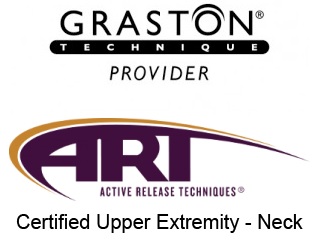Postural Therapy & Kinesio Taping
Postural restoration is a key element in IPT therapy and success. Improving posture can reduce chronic pain and accelerate recovery from injury. Posture therapy goes beyond traditional methods that just focus on treating symptoms. Instead, it aims to correct the underlying cause of your pain. Many times the pain or injury is not where the problem lies. Your body is intricately connected from head to toe, so it needs to be addressed as a whole, not just where it hurts.
Postural therapy takes this integrated approach, looking at the entire structure of the body and addressing asymmetries throughout your system. Skeletal mal-alignments such as joint elevations, spinal rotations, or muscle imbalances create excess stress in the body at rest and with movement. There is a medical principle known as “Wolfe’s Law” that states when a bone is stressed abnormally, it creates new bone. (Actually, when osteoblast cells are strained abnormally, osteoblasts lay down more cells). Osteophytes and degenerative joints are an example of this. This is why restoring proper alignment to ensure bones are stressed ideally is so important.
Kinesio Taping is a rehabilitative taping technique that is designed to facilitate the body’s natural healing process while providing support and stability to muscles and joints without restricting the body’s range of motion as well as providing extended soft tissue manipulation to prolong the benefits of manual therapy administered by IPT therapists. Additionally, therapeutic taping including Kinesio taping can assist in muscle performance and postural therapy.
By targeting different receptors within the somatosensory system, Kinesio Tape is claimed to alleviate pain and facilitates lymphatic drainage by microscopically lifting the skin. This lifting effect forms convolutions in the skin thus increasing interstitial space and allowing for a decrease in inflammation of the affected areas. IPT utilizes Kinesio taping when indicated to support PT outcomes.

